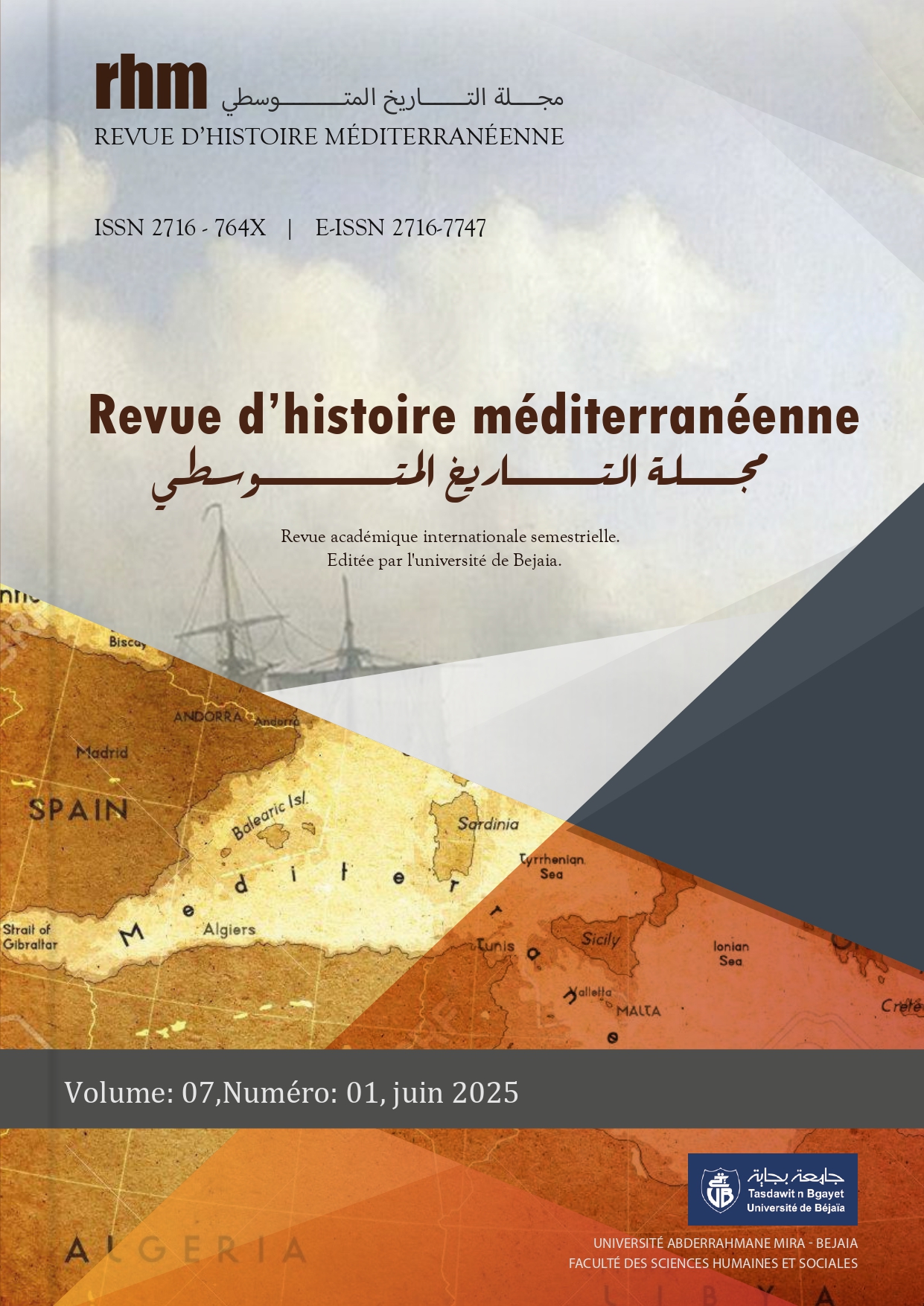Attentat de Krim Belkacem contre le caïd Demoune à Draa el-Mizan en 1947 : Autopsie d’une action révolutionnaire
Résumé
Le 25 décembre 1947, la Commune mixte de Draa el-Mizane a été le théâtre d’une attaque ciblant le véhicule du caïd Dehmoune, qui était accompagné du garde-champêtre Mahmoudi. La voiture a été criblée de balles. Les assaillis ont subi de graves blessures. Mahmoudi est décédé quelques heures après l'attaque. L'accusé soupçonné d’avoir orchestré l'attaque était Krim Belkacem, leader local du PPA, qui avait réuni les représentants du douar et a constitué un groupe armé pour tendre une embuscade dans le but d’éliminer le caïd. Ce contexte soulève des interrogations de savoir comment Krim Belkacem a parvenu à mobiliser les habitants du douar pour mettre en œuvre sa sentence ?
Les documents produits par l’administration coloniale, sa police et sa presse se sont focalisées sur l’attentat, présentant les maquisards comme de simples criminels, qualifiant leur action de terrorisme et de banditisme, tout en ignorant les représailles menées par les forces de l’ordre et leurs auxiliaires, qui ont conduit à l’arrestation de nombreux individus, dont plusieurs ont été condamnés à de lourdes pénitences, y compris la peine de mort.
Suite à l’attaque, la région de Dra El-Mizan toute entière a été soumise à une répression brutale, visant à contraindre par la force la population à collaborer avec les forces de sécurité, afin d’aider à appréhender les instigateurs. De nombreuses arrestations et condamnations ont eu lieu. Tandis que Krim Belkacem et certains de ses compagnons aient réussi à échapper à l’arrestation, traqués, ils menaient ainsi, une vie d'hors-la-loi.
Notre étude se propose d’explorer l’engagement armé de Krim Belkacem avant la révolution, et les répercussions de son action sur la population. Elle est divisée en trois grandes parties ; d’abord, nous décrivons les détails de l’attentat, ensuite, nous en étudions les motivations qui l’ont animé, avec l’analyse des raisons présentées par les sources colonialistes, et enfin, nous examinons les conséquences de la répression sur les habitants de la région de Dra El Mizan.
À l’issue de notre étude, nous avons conclu que pour des motifs nationalistes, liés aux agissements du caïd Dehmoun, Krim Belkacem avait initié et organisé l’attaque du caïd, en mobilisant la population, et choisissant les participants. Les documents administratifs et policiers, ainsi que la presse coloniale en Algérie, ont présenté les événements d’une manière déformée. Bien que l’attaque ait été motivée par des raisons proprement politiques, liées au refus des nationalistes PPA d’accepter les abus du caïd et de son garde-champêtre envers une population diminuée. Les sources coloniales l’ont interprétée comme un conflit d’ordre social, lié à des rivalités traditionnelles, animées par la concurrence des soff. Alors, si ces facteurs qui par le passé était déterminants, leur importance a été diminuée par le développement du mouvement nationaliste face au régime coloniale et aux agents qui le représentent dans les villages Kabyles. En action de représailles, les forces de sécurité colonialistes ont créé une milice, et sur la base d’indications obtenues auprès de leurs mouchards, ont mené une répression féroce, contre la population qui abritait et aidait les « hors la loi ».










